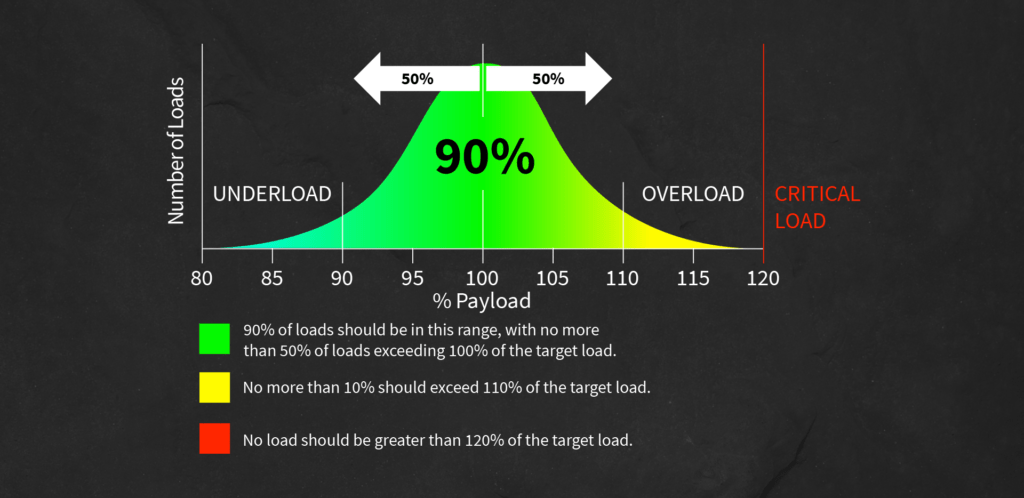The average load indicator is used to track what is the average weight, in tons, carried by trucks in a given period of time, helping managers to verify the level of loading efficiency for the use of transport capacity or payload of the equipment.
This indicator is influenced by factors such as the type of tire used, the equipment manufacturer’s payload, density, and material Swelling. In addition, it has influence on other operational indicators such as productivity and Asset Availability.
Want to know more about the importance of the average load and its influence on other operational indicators? Follow this content!
IMPACT ON PRODUCTIVITY
The productivity of the trucks is directly proportional to their average load, as shown in the following formula:

Therefore, the higher the average load, the higher the productivity tends to be, because more material is transported in the same trip. Thus, to avoid productivity losses it is essential that the loading and transport process does not have underloads, which are loads below the average load which are obtained through the parameters of this equipment:

In which:
CM Carga. – AL (Average Load) Load
N.P – Number of Passes
Vol.C. – Scoop Volume
F.Ench – Fill Factor
D.Emp – Swelled Density

In which:
CM Transp. – AL Transportation
Vol.C. – Scoop Volume
F.Ench – Fill Factor
D.Emp – Swelled Density
IMPACT ON SAFETY
For reasons of safety and structural integrity of the load and transport equipment and its components, there is a limit to the mass that can be transported per cycle. This limit is defined by the manufacturer, aiming to preserve the physical integrity and prolong the useful life of the tires.
When this limit is exceeded, what is called “overload” occurs, making the transportation of the material an unsafe operation, which can compromise the structures and components of the trucks as well as significantly reduce the useful life of the tires.
The graph below shows the percentages referring to the load limits:

LOAD DISTRIBUTION
Decentralized loads influence the occurrence of undue overloads and it is important to characterize the positioning of the cone formed on the truck’s bascule in order to monitor the incidence of decentralized loads that may result in biased reading of the scales and suspensions.
IMPACT COM ASSET AVAILABILITY
When the average load of the trucks increases, a greater productivity of this equipment is noticed because more material is transported in the same trip. However, it is necessary to pay attention to the capacity, condition, and maintenance of the trucks’ tires so that possible incidents do not happen due to stress, increased pressure, and temperature.
Overloads or poorly centered loads are operational situations that directly impact the asset availability of the trucks as they cause premature wear of the truck components and drastically reduce the useful life of the tires, as it can be seen in the table below. An overload of 10% is enough to reduce the useful life of the tire by 15%.

In addition, they also cause increased maintenance costs, especially with tires, which represent about 20% to 30% of the fleet’s operating cost.
The purpose of analyzing the average load indicator of off-highway trucks is to verify whether the equipment is being used appropriately in terms of transport capacity. Managing the load that is carried on the trucks is of utmost importance because it allows those responsible for it to improve the efficiency of the truck and loading equipment’s use, improving productivity levels, avoiding overloads that may cause damage to the equipment’s useful life while reducing operation and maintenance costs.
Did you like this content? Share it on your social networks!



